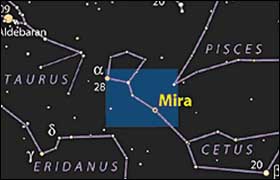In the next three days it will be possible to see one of nature's most spectacular "shows": the "meteor shower"
The summer peak of the phenomenon will be seen in Israel tomorrow and on Tuesday, between midnight and one in the morning
In the next three days it will be possible to see one of nature's most spectacular "shows": the summer "meteor shower", known by many as "falling stars". The peak of the phenomenon will be seen in Israel tomorrow and on Tuesday, between midnight and one in the morning.
The "meteor shower" of August was created as a result of the burning of dust grains and rock particles originating in space, upon entering the Earth's atmosphere. When the Earth passes through one of these concentrations of debris, we see a spectacular sight in the form of streaks of light crossing the sky - provided that we are far from residential lights and that the sky is not cloudy. The expected rate of "falling stars" is 60-50 per hour.
The meteorite shower, known by scientists as the "Persaide shower", is related to material emitted from the tail of the comet Swift-Tettley, which was discovered back in 1862.
A.D.M

Tomorrow: "Mira" at its peak brightness
A photograph of Mira from the space telescope, showing the star itself and its partner. The photograph in purple light (lower right) shows a bulge from the changing star towards the partner. This may be the stuff
which is drawn from one star to another
You should try and observe the star "Mira" tomorrow with its changing brightness * Who discovered it? What's going on in it? where is he
Is it on the sky map?
Dr. Noah Brosh
In the following days, until mid-August, a phenomenon that was first predicted 406 years ago will repeat itself: the star Mira will reach maximum brightness. It happens once every 300 days, but we'll get to see it again in an especially dark sky, only in 2007
Mira is a star of the type known as a "long-cycle variable". David Fabricius discovered it for the first time in the middle of August in 1596. It appeared as a new star, which had not been noticed before
so.
This was about ten years before the first astronomical operation of the telescope. Therefore Fabricius' observation was made with an open eye.
Anyone can repeat this observation now if they just get up in the morning. The most desirable date: tomorrow, August 12, together with the meteor shower, the "Persaids".
Mira was first marked on star maps in 1603 by the astronomer Johann Bayer. However, there is a possibility that it was identified as early as the 2nd century BC. Bayer marked the star as one of the faintest, close to the limit of the eye's ability to see. He didn't notice that his brightness was changing.
It is not clear who gave the name to this star. "Mira" in Latin means "great". In 1667 it was found that the change in brightness is cyclical. Today a cycle of 331 days is mentioned, but this is not absolute and constant: sometimes it is short to 304 days and sometimes - .355.
The way light changes was explained only in 1926 when it became clear that "Mira" swells and contracts in an almost cyclical manner. The process is driven by the instability of the star's atmosphere. Occasionally it becomes almost opaque to radiation, which must escape from the inner regions where the nuclear combustion reactions take place.
The resulting pressure pushes the layers of the atmosphere to swell and the star then reaches its maximum diameter: about 650 million km. If "Mira" was our sun, at this maximum inflation, both the Earth and Mars would be inside it.
Mira is a relatively close star to our solar system - about 420 light years away from us. It belongs to the group of stars of the type "red giants", whose inner regions,
The hydrogen turns into helium, and the helium into carbon and oxygen.
Its surface temperature is about 2000 degrees (compared to about 5700 degrees in the sun). That's why its color is red.
Despite its extremely large dimensions, Mira contains an amount of matter similar to that of our Sun. At its peak brightness, Mira produces 15 thousand times more light than the sun. Another interesting detail - apart from the change of light: Mira is a member of a two-star system. Its partner is a white dwarf - an extremely dense star, orbiting Mira at a distance almost twice that of Pluto from the Sun.
Advice for those who will try to observe the Mira, tomorrow, at its maximum brightness: to find it in the sky you must use a star map, such as the one shown here. First, the star cluster "Kima" (Pleidaes) must be identified. Mira is about 30 degrees southwest of this cluster, about three fists outstretched. At peak brightness, Mira will be a relatively bright star, in a starless region.
https://www.hayadan.org.il/BuildaGate4/general2/data_card.php?Cat=~~~290509789~~~56&SiteName=hayadan
